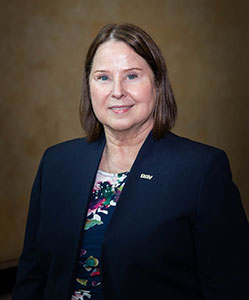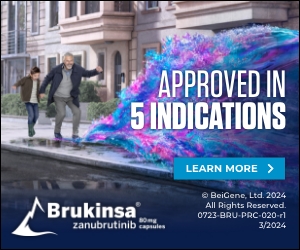WASHINGTON, DC — There’s a well-worn quote about how laws are like sausages, in that you should never either being made. In reality, the legislative process can be even messier, more laborious, and require even more hands in its construction.
Just ask Joy Ilem, a former Army medic who, for the past 25 years, has been a part of Disabled American Veterans’ national legislative team, serving as DAV’s national legislative director since 2009. Her job is to help determine the needs of its veteran constituents, distill those into a set of priorities, and find ways to inject those priorities into the legislation passed by Congress each year.
“When I was asked to join the national legislative staff—at the time, I had little experience as far as legislation, specifically,” Ilem said. “It was really on-the-job training and learning all about advocating. … My first assignment was health policy issues. Our DAV members are big users of VA’s healthcare system.”
It’s those users who determine DAV’s legislative priorities. Each year, the veteran service organization (VSO) holds a national convention attended by hundreds of DAV members—delegates who are assigned to different legislative workgroups. Last year, those workgroups resulted in more than 500 proposed resolutions covering every area of VA benefits and healthcare. Of those, 240 were adopted by DVA.
It’s Ilem and her team’s job to take those resolutions and distill them down into a half-dozen legislative priorities they can present to Congress. For example, the PACT Act and the need to care for toxic-exposed veterans was a major priority for DAV—one that took years of advocacy to achieve.
“We had been working on that toxic exposure issue for years, and that was over two Congresses,” Ilem said.
“This year, one of our focuses is to ensure the faithful implementation of the PACT Act,” she added. “We also want to address the exposures still pending that didn’t make it into the PACT Act. We’re always trying to make sure we’re following through.”
The well-being of women veterans is another major focus for DAV. The VSO has put out multiple reports on women veterans, the most recent focusing on mental health. The report pointed at VA statistics that showed a 24% jump in suicide among women veterans between 2020 and 2021 compared to a 6.3% jump in male veterans and a 2.6% increase among civilian women. The report identifies military sexual trauma (MST), intimate partner violence, substance-use disorders and reproductive life-cycle issues as major factors.
“We found a number of factors that put women at higher risk for mental health challenges and suicidal ideation,” Ilem explained. “We really wanted to take that on—to really raise awareness.”
So how does DAV work to take a priority like the mental health of women veterans and turn it into legislation that can address the issue?
“We will meet with members of Congress, and sometimes they’ll express an interest in an issue. We always try to meet with all the members of the committees and go over our goals. … They’ll often let us know ‘I’m very interested in this one,’” Ilem explained. “We’ll work with their staff on what we think are some issues. We’ll put forth policy solutions or legislative solutions. They might hold a roundtable—there was one on women veterans—and include the VSO community to try and hammer out what should we be focused on.”
Ilem and other members of DAV will regularly testify at committee hearings, then follow up with committee staff afterward to do what they can to support legislation they want to see passed.
“The frustrating part is when a package is ready to go, but they can’t quite find consensus on issues, and it gets delayed,” she said. “Or the worst-case scenario is when legislation can’t get passed by the end of the Congress, and it has to be reintroduced.”
Effectively, DAV has a 2-year window, but there are always pieces of legislation that need to get taken up the next Congress. An election year also throws a wrench into the process, as legislators take time away from working on bills to return home and campaign.
Things have grown more complicated during Ilem’s time at DAV. Newer committee members are being given subcommittee chairs, and the intricacies of VA healthcare and benefits can involve a steep learning curve.
The amount of legislation taken up each year has also grown.
“Fifteen years ago, it used to be very controlled the way they introduced legislation. For example, there were maybe six bills introduced at a hearing,” Ilem explained. “Now, it’s not unusual for us to have 20 or 30 bills per hearing.”
Ilem’s job also grows easier or harder from one set of VA leaders to the next.
“One of DAV’s jobs is having a good relationship with the VA,” she explained. “But every administration is different. If they embrace the VSO community, they will listen to us.”
A good relationship with VA also makes it easier to get the data which informs DAV’s recommendations to Congress.
“It’s not state secrets, but if we can’t get those from VA, or we can’t get them in a timely way, it can hamper our ability to get a full picture,” Ilem said.
A healthy VA, she explained, is critical to the well-being of disabled veterans.
“We’ve really focused on VA being the primary provider of healthcare whenever possible,” Ilem said. “While we know community care is part of VA care. … We really believe in the expertise that VA brings. … The research focus is there, and they’re able to turn research into health treatments quicker. There’s this real focus on what are the needs of veterans. And all the wrap-around services that VA provides really make it special.”


